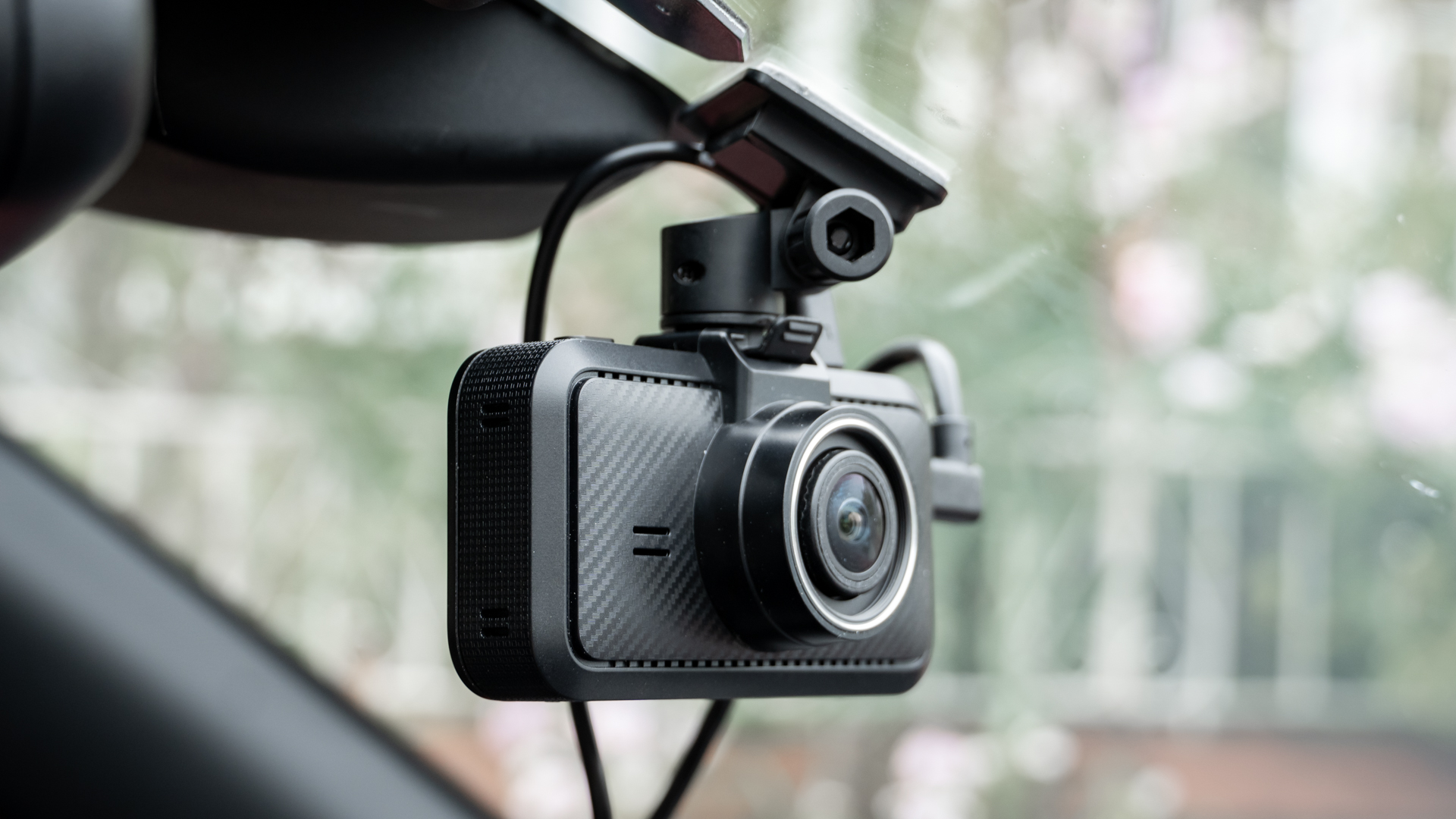
Forward-facing dash cams that shoot in 4K have been around for a while now. But what about one that records in 4K to the rear, too? That’s what makes the new Miofive S1 Ultra stand out from the crowd.
As well as that headline-grabbing resolution, the S1 Ultra has Wifi, GPS, HDR, and Bluetooth – essentially, everything we have come to expect from a flagship dashcam. There’s also a 3-inch display on the rear, a parking mode when the buyer opts for a hardwired installation, and a framerate of 30 frames per second. And, this being 2024, there’s a promise of AI too. Of course, there is.
Does that impressive specification sheet make the Miofive S1 Ultra all the dash cam you’ll ever need? Or is it overkill to shoot 4K to the front and rear? Read on to find out.
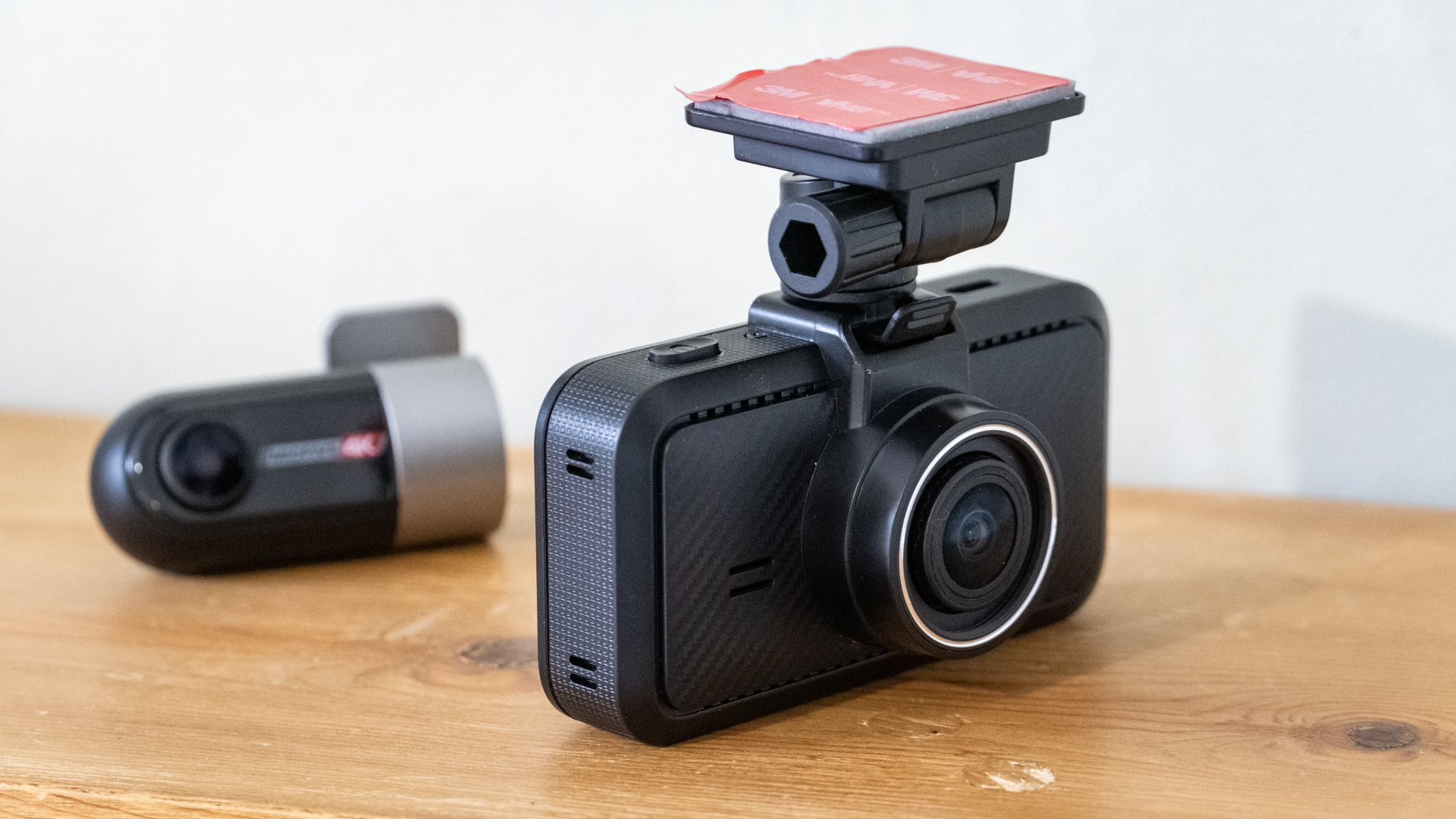
Miofive S1 Ultra: Specifications
Miofive S1 Ultra: Price
Available now, the Miofive S1 Ultra is priced at $199.99 / £199.99. For that price you get both the front and rear camera, plus windscreen mounts for both, a cable to connect them together, and a choice of a long or a short cable to plug the front camera into a USB port, or the included 12-volt adapter.
Miofive S1 Ultra: Design & Handling
Miofive has kept things simple with the design of the S1 Ultra. It has resisted the temptation of making its flagship dash cam stand out from the crowd and instead built a device that is relatively compact (but not tiny) and puts its large lens front and center.
The 3-inch screen takes up much of the rear panel and is joined by a set of four buttons for navigating the menu system. There’s a power button on the top edge, along with a USB-C port for power and a slot for connecting to the windscreen mount. The left side is home to a microSD card slot (with a 64GB card included in the box) and a socket for connecting the rear camera via an extra-long cable, also included.
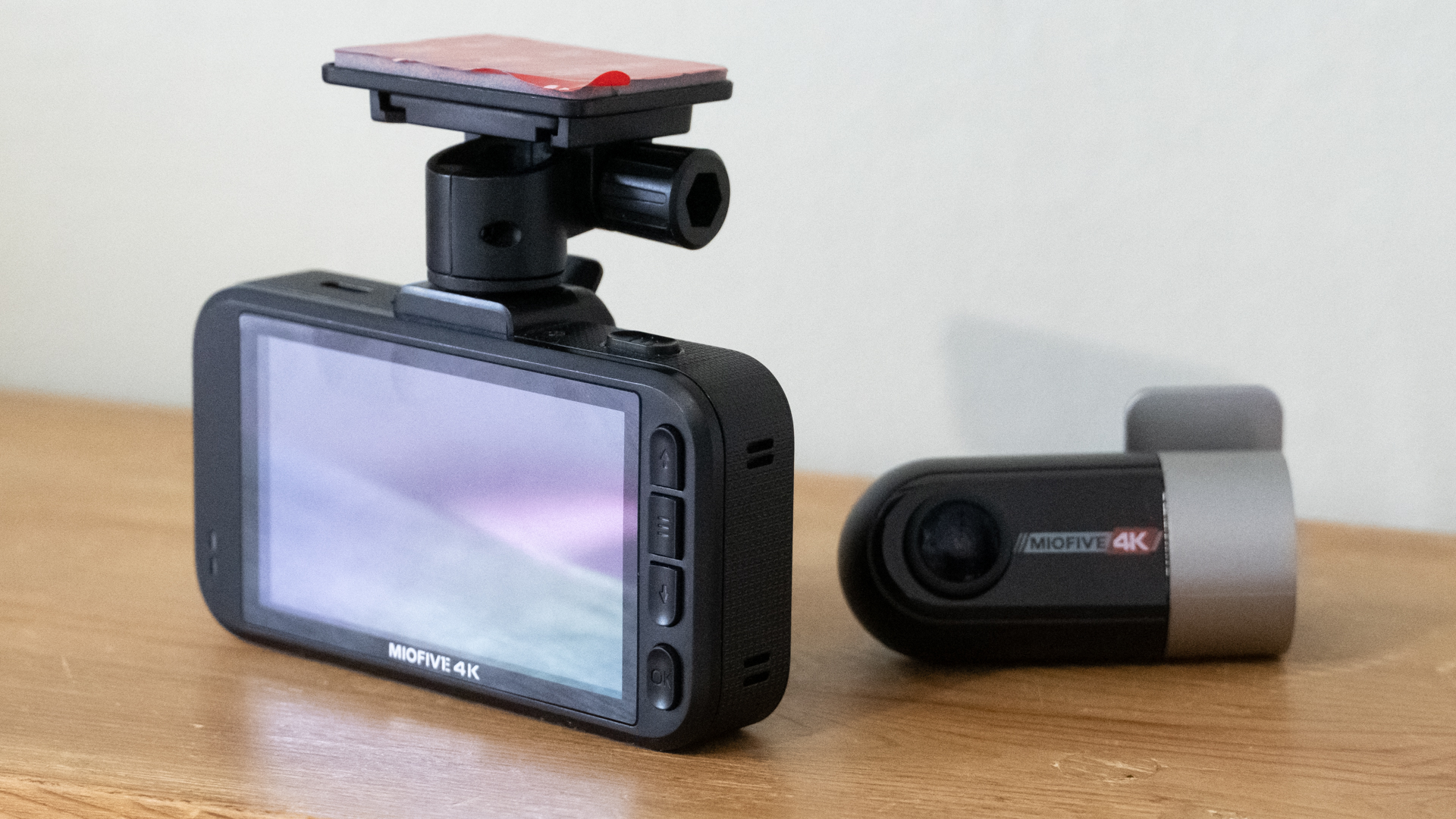
There’s nothing particularly special here, but the camera feels well made and the carbon-style effect on the front panel gives it a premium aesthetic. The windscreen mount offers horizontal and vertical adjustment, with the latter locked into place with a screw that’s designed to be tightened by hand. The mount slides onto the camera and locks into place, then slides onto a mounting plate that sticks to the windscreen with an adhesive pad.
The rear camera is much smaller, despite also packing a 4K sensor. As is commonplace among rear-facing dash cams, it is attached to a small screen mount in a way that means it can be adjusted through 360 degrees. The mount has an integrated adhesive pad for sticking to the screen.
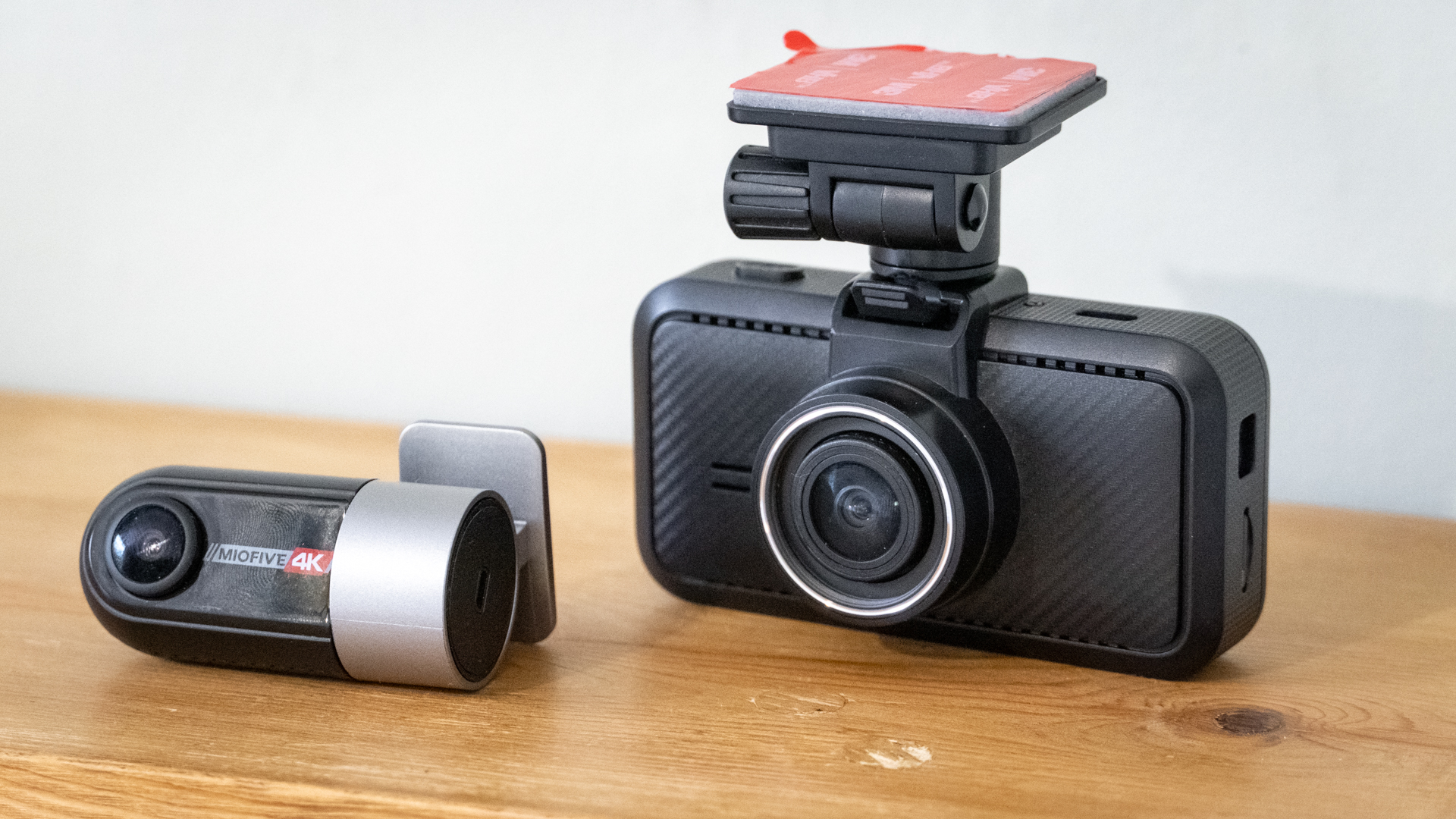
Miofive S1 Ultra: Performance
Installing and setting up the Miofive S1 Ultra is much like any other dash cam. The mount sticks to your windscreen with an adhesive pad, then it’s just a case of running the included cable from your car’s 12-volt lighter socket to the camera itself, either directly or by tucking it between interior panels for a neater look. There’s a tool included in the box to help with this.
The camera switches on when you fire up your car and starts recording right away. It’s then up to you as to whether you connect your phone with Wifi and the Miofive app, or continue without. The free app (for iOS and Android) works well, as far as dash cam apps are concerned, and serves as a convenient way to view saved footage and adjust the camera’s many settings. These include resolution (4K, 2K, or Full HD, all at 30 frames per second), collision sensitivity, language, use of the microphone, exposure, speaker volume, data overlay (such as time, date, and speed), and settings for the parking mode.
It isn’t strictly necessary though, and thankfully neither is the creation of a Miofive account. You can create one with your email address, but I prefer skipping that step and going straight to the camera.
Some key settings, like video resolution, can be adjusted on the camera itself. The user interface is fairly simple to navigate via the buttons on the back, but the screen is not touch-sensitive.
Some 4K dash cams struggle to live up to their own hype, producing footage that is noisy, grainy, and poorly exposed. The Miofive S1 Ultra is no such dash cam. It produces great video that is sharp, clear, and mostly free of noise. Details like road signs and vehicle license plates are crips, colors are accurately reproduced and everything is nice and stable, even when driving over large speed bumps.
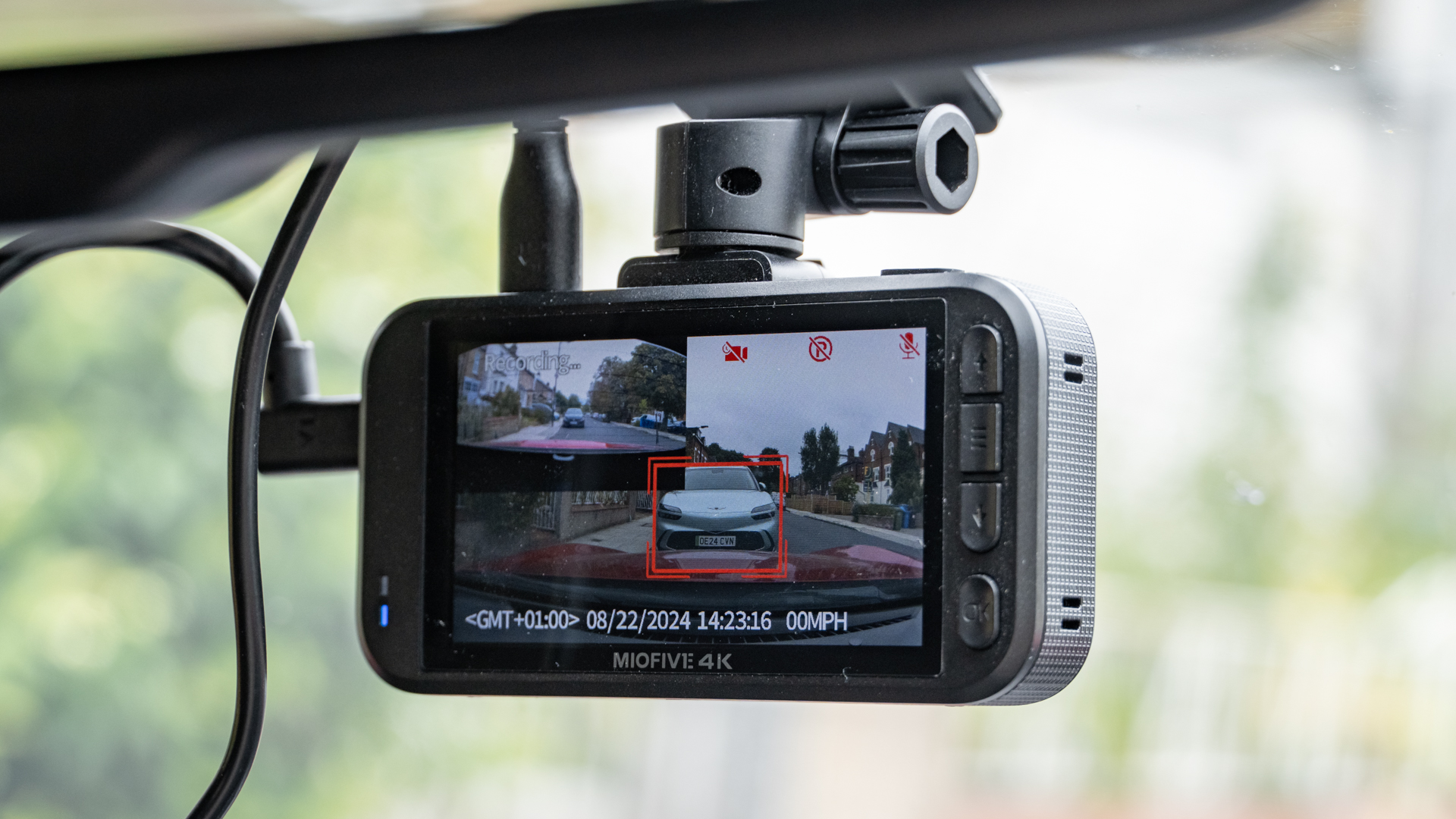
As is normal with dash cams, video quality varies with ambient lighting. On a bright, sunny day the footage created by the Miofive S1 Ultra is excellent, while on a gray and overcast day there’s more grain and colors tend to be flat. They still have plenty of detail though, so you’re still getting the benefits of those 4K sensors.
That said, the rear camera of my review sample was set to 1440p by default, also known as 2K resolution. Upping this to 4K made a small difference, but it also lowered the frame rate from 30 per second to 25. The front camera shoots at 30 fps regardless of the resolution you choose (1080p, 1440p or 4K).
Recordings are large, eating up 0.4GB of storage every minute with both cameras running at 4K, but this isn’t too much of a problem since Miofive provides a 64GB microSD card in the box. The card will get full after about four hours of driving, but incidents are saved in a protected folder that isn’t overwritten, so there’s no danger of collision evidence being deleted as the card fills up.
Lastly, the S1 Ultra has a set of AI-powered driver assistance tools. When enabled, these alert you if it thinks you’re fatigued or driving harshly, and gives you an audible nudge if you don’t notice the car in front setting off. The latter can be useful in traffic, but I prefer to keep these switched off, since they never work as well as the safety systems fitted to the car itself.
Miofive S1 Ultra: Verdict
This is a great dashcam. The hardware feels well-made and is aesthetically pleasing, while the video produced by both the front and rear cameras is of excellent quality. I would like to have seen a higher frame rate from the rear camera when recording at 4K, as 25 fps feels a bit low, especially when the front camera manages 4K at 30 fps. But I’m splitting hairs with that complaint, as in reality there’s little to tell apart from the rear camera’s 1440p at 30fps and its 4K at 25 fps. Which one you choose depends on personal preference.
I tend not to use a dashcam’s smartphone app if I can help it, so I was pleased to see how the S1 Ultra can be set up and used without ever installing the app, or creating a Miofive user account. That said, 5GHz Wifi means videos can be transferred quickly to your smartphone if you’d rather not transfer them via the included microSD card.
Ultimately, you could argue that 4K footage isn’t necessary for a dashcam, and 1080p or 1440p is absolutely fine. But the Miofive S1 Ultra makes a compelling case for the higher resolution. A sharper video with more detail is always a good thing, and that’s what 4K delivers.
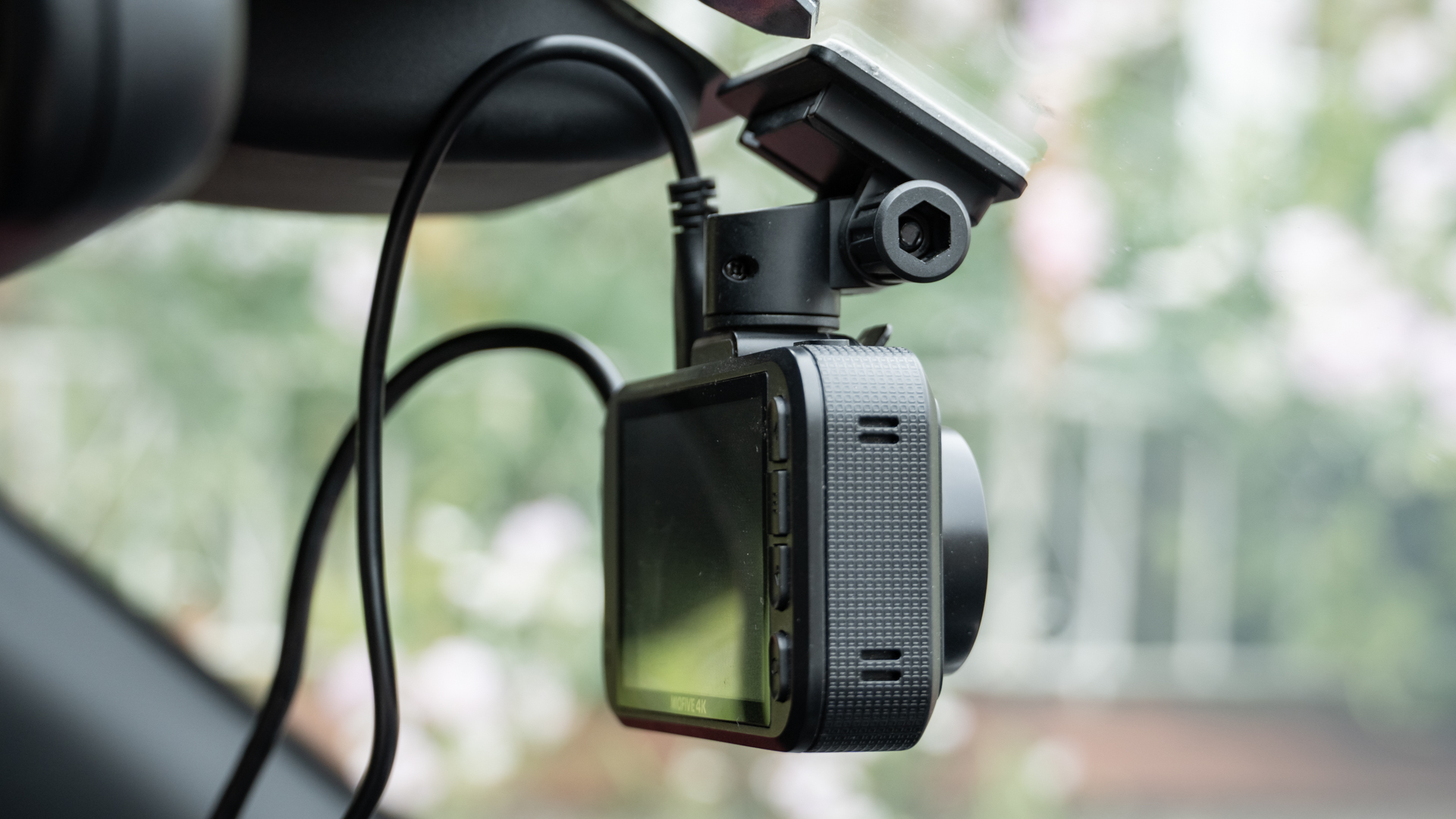
✅ Buy it...
- You want 4K footage to both the front and rear of your vehicle, with great quality and a decent field-of-view.
- You need a two-channel system, with one camera facing forwards and one backways, For forwards-only, the Miofive S1 is available without a rear camera.
- You want a dashcam with a display. This makes it larger and less discreet but means you can adjust settings and view footage back without using a phone app.
🚫 Don't buy it...
- You’re on a budget. There are plenty of Full HD dash cams available for less money than this dual 4K system.
- You need a higher frame rate. With great resolution comes a disappointing frame rate, as the S1 Ultra is limited to 30 fps from the front camera and just 25 fps at the rear.
- You prefer a more discrete dashcam. There are plenty of smaller options that lack a screen but fit neatly behind your vehicle’s interior mirror. The Miofive isn’t the smallest dashcam around, so a smaller device could be the preferred option for some drivers.







